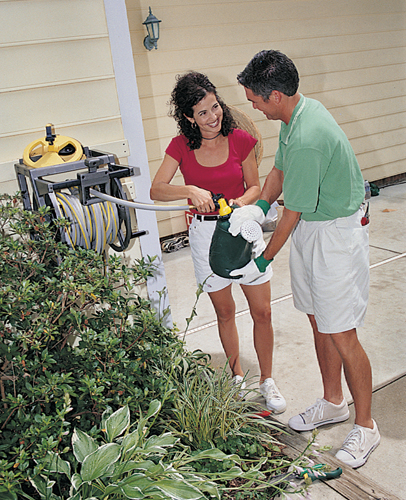Watering as the Weather Warms Up

|
For lawn care afficionados, perhaps no time of year is more frustrating than summer. While the warmer time of year affords homeowners more time to work on their lawns, excessive heat can also make those efforts seem futile.
Depending on where you live, drought restrictions could also prove irritating, limiting the amount of water you can use to keep your lawn looking lush and healthy. However, the Environmental Protection Agency (EPA) notes the importance of such restrictions, and offers the following tips for watering your lawn. While these tips can help keep a lawn healthy through the heat, it's important to check that they are in accordance with any local restrictions.
* Water during the coolest part of the day. Should you drive past a golf course or outdoor sports complex in the early morning hours of summertime, you'll likely notice the sprinklers on. That's because it's often ideal to water during the coolest time of the day, which in summertime is frequently early morning. Water attracts the sun, so watering at midday could result in a burned lawn. Also, cooler temperatures will lead to less evaporation, meaning your lawn will get the water you're intending for it.
* Don't waste your water. Too often homeowners are wasting precious water by setting sprinklers to water their driveways and sidewalks. This isn't intentional but it is wasteful. When setting sprinklers, make sure they're situated to water only the lawn and garden, and not asphalt or concrete. This is especially important when watering under drought restrictions when you need to get the most out of the water you're allowed to use.
* Mulch around trees and shrubs. Mulch can be especially valuable when watering trees and shrubs. Because mulch retains moisture during hot weather, it can significantly reduce the need for watering during warmer months. Many landscapers feel mulch, in addition to its practical appeal, also adds aesthetic value to a landscape. It can also minimize weed growth.
* Water different plants differently. Not all plants are the same, and each requires varied amounts of watering. For example, trees and shrubs have deeper root systems than shallow-rooted plants. Therefore, trees and shrubs require longer but less frequent watering, as their root systems can retain water longer. Shallow-rooted systems don't require as much water with each watering, but need more frequent watering sessions. If you don't have a landscaper who takes care of your property, consult a local professional for advice on how to more efficiently and effectively water each plant, tree and shrub on your property.
To learn more about caring for your lawn, visit the EPA Web site at www.epa.gov.






